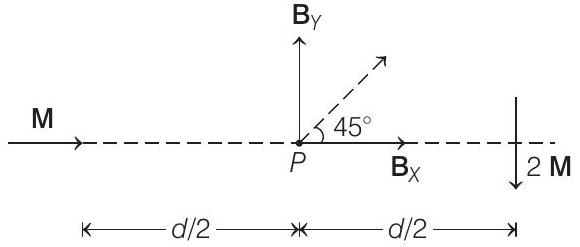Magnetics 4 Question 1
1. Two magnetic dipoles
 particle of charge
particle of charge
(2019 Main, 8 April II)
(a)
(b) 0
(c)
(d)
Show Answer
Answer:
Correct Answer: 1. (b)
Solution:
- Let

Here,
Also,
Similarly, for dipole

Here,
Also,
Thus, the resultant magnetic field due to
Since,
Thus, the resultant magnetic field
This means, direction of
where,
According to the above analysis, we get
Thus, magnitude of force on the particle at that instant is zero.
Key Idea Magnetic dipole moment of a current carrying loop is
where,
Let the given square loop has side
When square is converted into a circular loop of radius

Then, wire length will be same in both areas,
Hence, area of circular loop formed is,
Magnitude of magnetic dipole moment of circular loop will be
Ratio of magnetic dipole moments of both shapes is,






